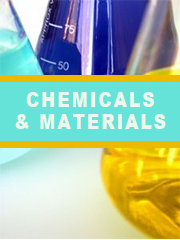Report overview
Vinyl acetate ethylene (VAE) emulsions are based on the copolymerization of vinyl acetate and ethylene, in which the vinyl acetate content can range between 60 and 95 percent, and the ethylene content ranges between 5 and 40 percent of the total formulation. This product should not be confused with the ethylene vinyl acetate (EVA) copolymers, in which the vinyl acetate generally ranges in composition from 10 to 40 percent, and ethylene can vary between 60 and 90 percent of the formulation. VAEs are water-based emulsions, whereas EVAs are solid materials used for hot-melt and plastic molding applications.
This report aims to provide a comprehensive presentation of the global market for Vinyl Acetate Ethylene Emulsions, with both quantitative and qualitative analysis, to help readers develop business/growth strategies, assess the market competitive situation, analyze their position in the current marketplace, and make informed business decisions regarding Vinyl Acetate Ethylene Emulsions. This report contains market size and forecasts of Vinyl Acetate Ethylene Emulsions in global, including the following market information:
Global Vinyl Acetate Ethylene Emulsions Market Revenue, 2018-2023, 2024-2030, ($ millions)
Global Vinyl Acetate Ethylene Emulsions Market Sales, 2018-2023, 2024-2030, (K MT)
Global top five Vinyl Acetate Ethylene Emulsions companies in 2022 (%)
The global Vinyl Acetate Ethylene Emulsions market was valued at US$ 3191.8 million in 2022 and is projected to reach US$ 3891.2 million by 2030, at a CAGR of 2.9% during the forecast period. The influence of COVID-19 and the Russia-Ukraine War were considered while estimating market sizes.
Global core VAE emulsion manufacturers include Wacker, Celanese etc.The top 2 companies hold a share about 60%. Asia Pacific is the largest market, with a share about 42%, followed by Europe and North America with the share about 40% and 13%.
We surveyed the Vinyl Acetate Ethylene Emulsions manufacturers, suppliers, distributors and industry experts on this industry, involving the sales, revenue, demand, price change, product type, recent development and plan, industry trends, drivers, challenges, obstacles, and potential risks.
Total Market by Segment:
Global Vinyl Acetate Ethylene Emulsions Market, by Type, 2018-2023, 2024-2030 ($ Millions) & (K MT)
Global Vinyl Acetate Ethylene Emulsions Market Segment Percentages, by Type, 2022 (%)
Ordinary VAE Emulsions
Waterproof VAE Emulsions
Global Vinyl Acetate Ethylene Emulsions Market, by Application, 2018-2023, 2024-2030 ($ Millions) & (K MT)
Global Vinyl Acetate Ethylene Emulsions Market Segment Percentages, by Application, 2022 (%)
Adhesives
Paints and Coatings
Redispersible Powder
Textile Chemicals
Others
Global Vinyl Acetate Ethylene Emulsions Market, By Region and Country, 2018-2023, 2024-2030 ($ Millions) & (K MT)
Global Vinyl Acetate Ethylene Emulsions Market Segment Percentages, By Region and Country, 2022 (%)
North America
US
Canada
Mexico
Europe
Germany
France
U.K.
Italy
Russia
Nordic Countries
Benelux
Rest of Europe
Asia
China
Japan
South Korea
Southeast Asia
India
Rest of Asia
South America
Brazil
Argentina
Rest of South America
Middle East & Africa
Turkey
Israel
Saudi Arabia
UAE
Rest of Middle East & Africa
Competitor Analysis
The report also provides analysis of leading market participants including:
Key companies Vinyl Acetate Ethylene Emulsions revenues in global market, 2018-2023 (Estimated), ($ millions)
Key companies Vinyl Acetate Ethylene Emulsions revenues share in global market, 2022 (%)
Key companies Vinyl Acetate Ethylene Emulsions sales in global market, 2018-2023 (Estimated), (K MT)
Key companies Vinyl Acetate Ethylene Emulsions sales share in global market, 2022 (%)
Further, the report presents profiles of competitors in the market, key players include:
Wacker
Celanese
DCC
Sinopec
Vinavil
Wanwei
Dow
Sumika Chemtex
Shaanxi Xutai
Outline of Major Chapters:
Chapter 1: Introduces the definition of Vinyl Acetate Ethylene Emulsions, market overview.
Chapter 2: Global Vinyl Acetate Ethylene Emulsions market size in revenue and volume.
Chapter 3: Detailed analysis of Vinyl Acetate Ethylene Emulsions manufacturers competitive landscape, price, sales and revenue market share, latest development plan, merger, and acquisition information, etc.
Chapter 4: Provides the analysis of various market segments by type, covering the market size and development potential of each market segment, to help readers find the blue ocean market in different market segments.
Chapter 5: Provides the analysis of various market segments by application, covering the market size and development potential of each market segment, to help readers find the blue ocean market in different downstream markets.
Chapter 6: Sales of Vinyl Acetate Ethylene Emulsions in regional level and country level. It provides a quantitative analysis of the market size and development potential of each region and its main countries and introduces the market development, future development prospects, market space of each country in the world.
Chapter 7: Provides profiles of key players, introducing the basic situation of the main companies in the market in detail, including product sales, revenue, price, gross margin, product introduction, recent development, etc.
Chapter 8: Global Vinyl Acetate Ethylene Emulsions capacity by region & country.
Chapter 9: Introduces the market dynamics, latest developments of the market, the driving factors and restrictive factors of the market, the challenges and risks faced by manufacturers in the industry, and the analysis of relevant policies in the industry.
Chapter 10: Analysis of industrial chain, including the upstream and downstream of the industry.
Chapter 11: The main points and conclusions of the report.
